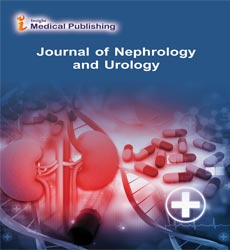A comparison of outcomes between retro-peritoneal and trans- peritoneal approach in laparoscopic live donor nephrectomies over a two-year period
Abstract
Patients with end-stage renal disease require ongoing dialysis until the damaged kidney is replaced. The new kidney can be taken from either a cadaver or donor, the latter being the preferred choice due to better kidney function in the recipient post-operatively. Kidneys are the highest-donated organ by far so extracting the kidney from a healthy donor must be done as safely as possibly to minimise inconvenience to donors. The aim of this project is to deduce the safest procedure for live donor nephrectomy as it is done by donors as an act of altruism and entirely for the benefit of the recipient. The procedure can be done via open-surgery which involves a long incision between 10- 20 inches through the side of the abdomen. The alternative method is through laparoscopic surgery which uses a small incision and digital guidance to access the kidney, and causes less cosmetic issues and post-operative complications for healthy donors. My aim is to identify which of the laparoscopic approach out of retroperitoneal and transperitoneal yields the best general outcomes for patients undergoing live donor nephrectomy. Patients with end-stage renal disease require ongoing dialysis until the damaged kidney is replaced. The new kidney can be taken from either a cadaver or donor, the latter being the preferred choice due to better kidney function in the recipient post-operatively. Kidneys are the highest-donated organ by far so extracting the kidney from a healthy donor must be done as safely as possibly to minimise inconvenience to donors. The aim of this project is to deduce the safest procedure for live donor nephrectomy as it is done by donors as an act of altruism and entirely for the benefit of the recipient. The procedure can be done via open-surgery which involves a long incision between 10- 20 inches through the side of the abdomen. The alternative method is through laparoscopic surgery which uses a small incision and digital guidance to access the kidney, and causes less cosmetic issues and post-operative complications for healthy donors. My aim is to identify which of the laparoscopic approach out of retroperitoneal and transperitoneal yields the best general outcomes for patients undergoing live donor nephrectomy.
Open Access Journals
- Aquaculture & Veterinary Science
- Chemistry & Chemical Sciences
- Clinical Sciences
- Engineering
- General Science
- Genetics & Molecular Biology
- Health Care & Nursing
- Immunology & Microbiology
- Materials Science
- Mathematics & Physics
- Medical Sciences
- Neurology & Psychiatry
- Oncology & Cancer Science
- Pharmaceutical Sciences
